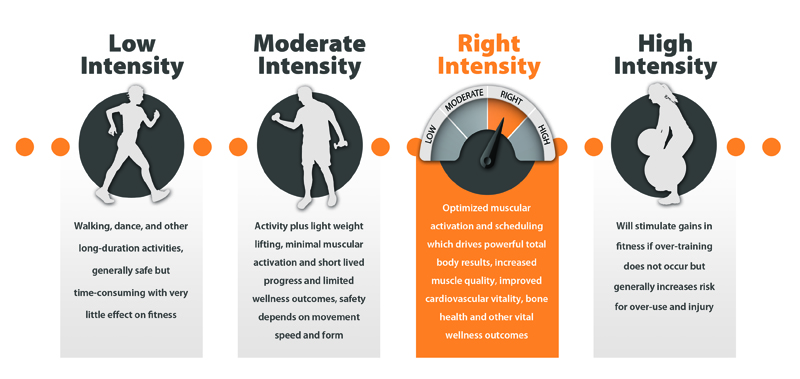
#Define intensity how to#
Provides the ability to create intensity imagery from lidar data.įor more information on how to create and use intensity data in ArcGIS, see Creating intensity images from lidar in ArcGIS. Them that look something like black-and-white aerial photos. Your lidar data includes intensity values, you can make images from Intensity is relative, not quantifiable, therefore you cannot expect the same value off the same target from flight to flight or from elevation to elevation. The strength of the returns varies with the composition of the surface object reflecting the return.įeature detection and extraction, in lidar point classification,Īnd as a substitute for aerial imagery when none is available. Reflectivity is a function of the wavelength used, which is It is based, in part, on the reflectivity of the object struck by Strength of the laser pulse that generated the point. The Borg Rating of Perceived Exertion is also the preferred method to assess intensity among those individuals who take medications that affect heart rate or pulse.Intensity is a measure, collected for every point, of the return Note that this calculation is only an approximation of heart rate, and the actual heart rate can vary quite a bit depending on age and physical condition. What is Image Intensity Definition of Image Intensity: An image is defined as a two-dimensional function f(x, y) the amplitude of f at any pair of.

For example, if a person’s rating of perceived exertion (RPE) is 12, then 12 x 10 = 120 so the heart rate should be approximately 120 beats per minute. *A high correlation exists between a person’s perceived exertion rating times 10 and the actual heart rate during physical activity so a person’s exertion rating may provide a fairly good estimate of the actual heart rate during activity (Borg, 1998). On the other hand, if he felt his exertion was “extremely hard” (19 on the Borg Scale), he would need to slow down his movements to achieve the moderate-intensity range. Intensity, however, describes the degree of shaking caused by an earthquake at a given place and decreases with distance from the earthquake epicentre. Intensity means being willing to push your body just a little bit further than you want to being willing to force your body to give a little bit more than it wants. If he describes his muscle fatigue and breathing as “very light” (9 on the Borg Scale), he would want to increase his intensity. For example, a walker who wants to engage in moderate-intensity activity would aim for a Borg Scale level of “somewhat hard” (12-14). Through experience of monitoring how your body feels, it will become easier to know when to adjust your intensity. Self-monitoring how hard your body is working can help you adjust the intensity of the activity by speeding up or slowing down your movements. During activity, use the Borg Scale to assign numbers to how you feel (see instructions below). Practitioners generally agree that perceived exertion ratings between 12 to 14 on the Borg Scale suggests that physical activity is being performed at a moderate level of intensity. These include a rating of 6 perceiving “no exertion at all” to 20 perceiving a “maximal exertion” of effort.

Although this is a subjective measure, your exertion rating based on a 6 to 20 rating scale, may provide a fairly good estimate of your actual heart rate during physical activity* (Borg, 1998).Īs you exercise you can rate your perceived exertion using several anchors. It is based on the physical sensations a person experiences during physical activity, including increased heart rate, increased respiration or breathing rate, increased sweating, and muscle fatigue.

Perceived exertion is how hard you feel like your body is working. The Borg Rating of Perceived Exertion (RPE) is a way of measuring physical activity intensity level.


 0 kommentar(er)
0 kommentar(er)
